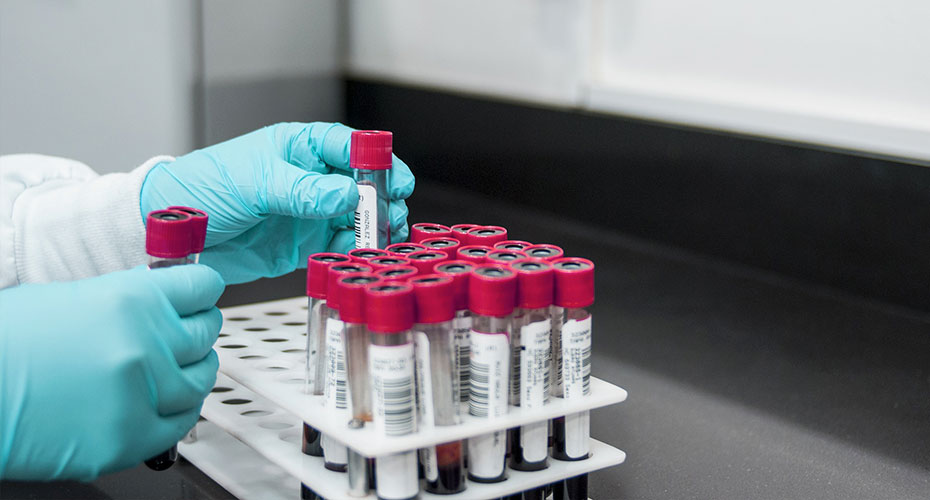Mar 1, 2021
A new way to look at lab tests
Dr. Ishani Ganguli says it happens time and time again.
An adult comes in for their annual checkup and leaves the doctor’s office with a prescription for a battery of lab tests, including a urine test.
The patient goes for the test, and the results show something unexpected, such as a small amount of blood in the urine sample.
It is not uncommon for people to have trace amounts of blood in their urine—even exercise can cause this to happen—but now that the clinician has seen the result, they may feel obligated to order still more tests, potentially increasing the financial, emotional and physical costs to the patient in the form of additional payments for tests, rising stress levels as they await the results, and even complications for certain tests, notes Ganguli, who is an internist and researcher at Harvard Medical School and Brigham and Women’s Hospital.
These additional tests, which may include a scan of the abdomen and pelvis to look for kidney cancer or a procedure where a small camera is inserted into the bladder to look for cancer, make up what Ganguli says are known as “cascades of care” that may cause more harm than good.
Potential downsides
Increasingly, clinicians are noting that such routine tests, long offered out of habit, may provide little to no value.
“Historically there has been a sense among patients and doctors that at every annual checkup you get a set of labs—that it’s one component of the annual checkup,” said Dr. Jamie Colbert, an internist and Blue Cross Blue Shield of Massachusetts’ senior medical director for delivery system innovation and analytics. But, he says, “Most healthy people don’t need labs every year. They aren’t necessary and in many cases are harmful because they can create the need for further testing, which can lead to unnecessary costs, stress and worry. "
The science is very clear that doing annual lab testing on people who are otherwise healthy is not beneficial and in many cases is harmful.
For example, Colbert says, “A patient might get 10 different lab tests at their yearly physical, and it’s not uncommon to have one or two be slightly abnormal. It could be that that particular day you didn’t have breakfast, or you went for a big run, and one or more of your labs might be slightly outside the normal range. But once your doctor sees the result, they can’t just ignore it. Your doctor would have to do something about it. That likely means more tests.”
And not every test is fully reliable — there can be false positives or false negatives — and unexpected findings can lead to even more downstream tests and treatments.

A more thoughtful approach
The medical community is beginning to move away from ordering what are known as screening lab tests, such as blood counts, thyroid and urine testing, on a routine basis, such as at an annual checkup, unless there are other issues, such as current symptoms, risk factors or family history that indicate those tests could be beneficial. “If you are doing blood tests, there should be a reason,” Ganguli said.
For example, primary care physicians frequently order a lab test for vitamin D levels, but there is no data linking population-wide screening for vitamin D deficiency with improved patient outcomes. In fact, the American Society for Clinical Pathology, a national organization that oversees the science of lab testing, recommends against routine vitamin D lab testing. Clinicians may think that there is little consequence to ordering such a test, but there can be: an abnormal test result could cause patients anxiety, result in additional lab testing and cause financial burden to patients who often have to pay out-of-pocket for these tests (each vitamin D test can cost patients $50 or more).
Some medical practices have begun exploring ways to improve this system, implementing educational training programs for primary care doctors on laboratory testing, with the changes resulting in better care and lower costs for patients.
Blue Cross recently announced a new medical policy that will help ensure members are covered for medically necessary tests while unnecessary tests will be subject to costs, a change designed to support high-quality health care and help reduce unnecessary health care spending.
“This policy is in keeping with our health plan’s support of quality, affordable health care,” Colbert said. “A clinician always should get a careful history from the patient and do an exam, and then base further testing on the information gained during the visit.”
With such new approaches, doctors may not order the same set of tests patients may have gotten in the past, especially during their annual checkup—and that will benefit patients, Ganguli said.
“We no longer think it’s a good idea to get a whole bunch of bloodwork every year,” she said.
We’re much more thoughtful and deliberate about which tests we order, when and why.
Did you find this article informative?
All Coverage content can be reprinted for free.
Read more here.
PHOTO OF Dr. JAMIE COLBERT BY MICHAEL GRIMMETT

